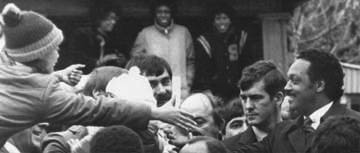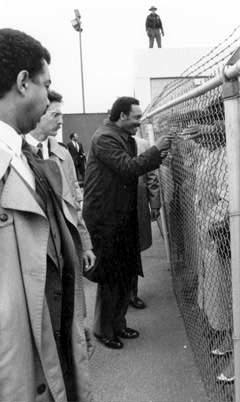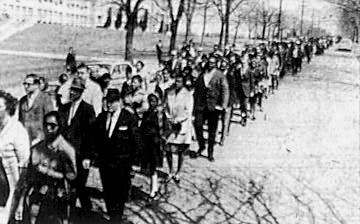
A youngster reaches out for a handshake from the Rev. Jesse Jackson as he moves through the crowd outside Farrell's Second Baptist Church. Members of the Mercer County branch of the NAACP have been successful in bringing many notable speakers, including representatives from the national office, to the region to speak to residents.(Herald file)

 Fans reach out to touch the Rev. Jesse Jackson at Youngstown-Warren Regional Airport. As a candidate for the Democratic presidential nomination, he visited the area April 7, 1984, during what some NAACP members called the exciting times. (John Zavinski/Herald file)
Fans reach out to touch the Rev. Jesse Jackson at Youngstown-Warren Regional Airport. As a candidate for the Democratic presidential nomination, he visited the area April 7, 1984, during what some NAACP members called the exciting times. (John Zavinski/Herald file)

